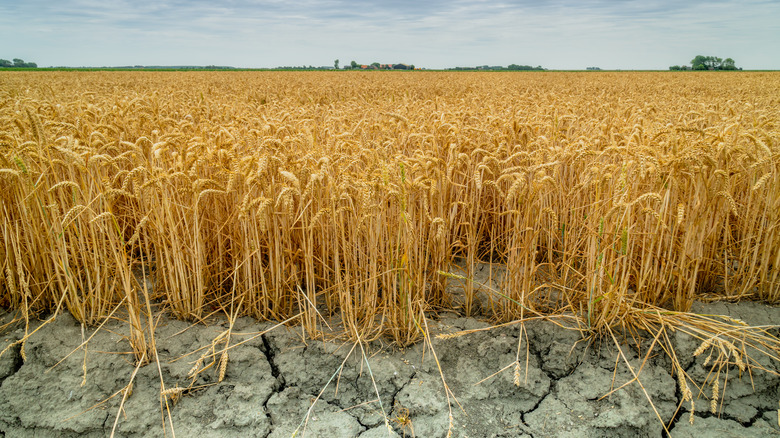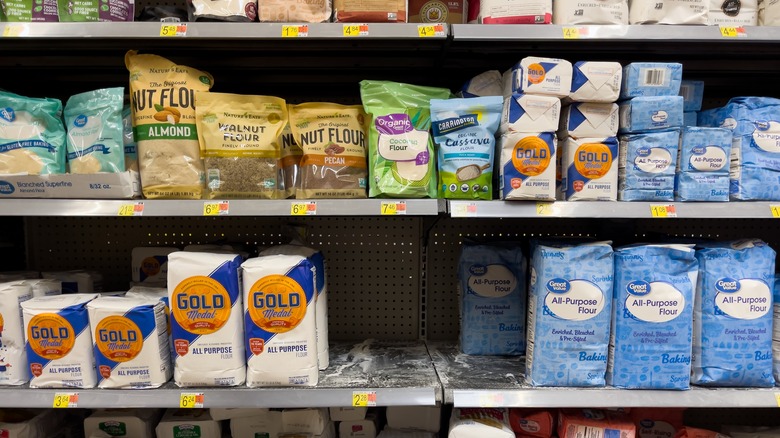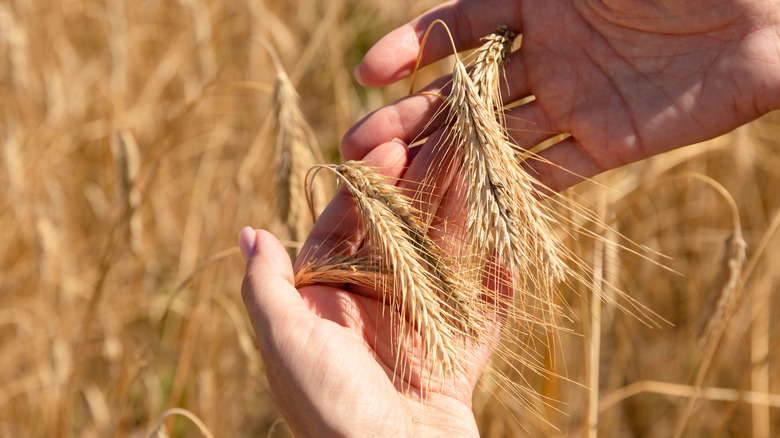Extreme Drought In The US Spells Bad News For Flour Prices In 2024
The global grocery crisis of the last few years has been particularly unkind to food staples. "Eggflation," meat prices, and cooking oils have finally started to plateau, and now, it looks like flour is next on the chopping block. Hard red winter and hard red spring are the two largest classes of wheat grown in the U.S., and a year of extreme drought has resulted in a lower yield — so much lower that analysts are anticipating wide-scale supply chain shortages and price gouging (via Food Business News).
The first inklings of this looming epidemic cropped up last spring when whiplash periods of heavy rain and flooding were followed by extreme drought in the South Central U.S. Still, experts predicted that the global wheat shortage might've finally been coming to an end as, on the opposite side of the world, the Russia-Ukraine conflict began to ease and export blockades lifted. Now, though, war has taken a backseat, and drought has stepped into the spotlight.
The USDA's most recent national seeding scorecard shows that 75% of all wheat in the Central and Southern Plains region is growing in drought conditions. Kansas, Texas, Colorado, Nebraska, Montana, and South Dakota were all labeled burgundy (the most severe level) on the drought monitor map — and none of it looks good for 2024's flour prices.
Expensive for farmers and consumers alike
The shortage of hard winter wheat places lots of pressure on spring wheat production. Springtime seeding takes place toward the beginning of April but is being delayed in some regions (like Northern North Dakota) as large areas of snow remain unmelted. After corn and soybeans, wheat is the third-biggest crop grown domestically in America.
The U.S. produced 1.65 billion bushels of wheat across 35.5 million acres of dedicated wheat farmland during the 2022-2023 market year alone, per USDA data. While these figures might seem impressive, they represent a record-low year. U.S. wheat production has been steadily declining since 1981, with a 42-million-acre drop growing over 1 billion fewer bushels.
In the south and central Plains, what crops are managing to grow at all aren't very good quality. Now, farmers in Kansas, Oklahoma, and Texas are facing the decision of whether to scrap their crops altogether — a move not without major ramifications. Kansas Wheat CEO Justin Gilpin explains to Food Business News, "Crop insurance adjusters are overwhelmed with calls and putting the decision back on the farmers of whether or not they'll take insurance on those fields, zero it out, not take it to harvest." Either way, farmers are paying up fat just to finance a scant harvest year.
What the reality might look like for grocery shoppers
Looking forward, the Wheat Quality Council is scheduled to embark on its annual wheat tour from May 15-18, during which it will inspect fields around the country to get a more accurate picture of the anticipated wheat yield. According to Gilpin, current figures are 0 to 4 bushels per acre on average. This shortage will impact all wheat-related products, including bread, cereal, pasta, and flour — starting with the price tag.
When Russia invaded in late February 2022, global wheat prices saw a 55% jump by early March, per AP News. Hopefully, any markup consumers see this time around won't be quite as high, but judging by last year's market trends, it isn't looking great. On the flip side, there's still hope that the tide could shift and a good spring wheat crop could minimize the damages. Healthy plots of soft wheat are making a slow but sure recovery in Missouri, Illinois, Indiana, Michigan, and Ohio, all of which had a "good-to-excellent" winter wheat rating.


